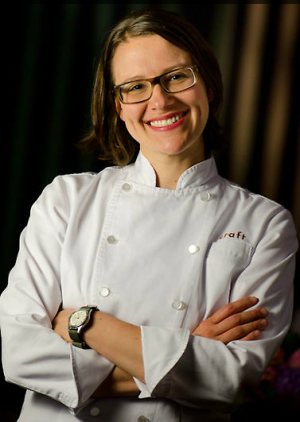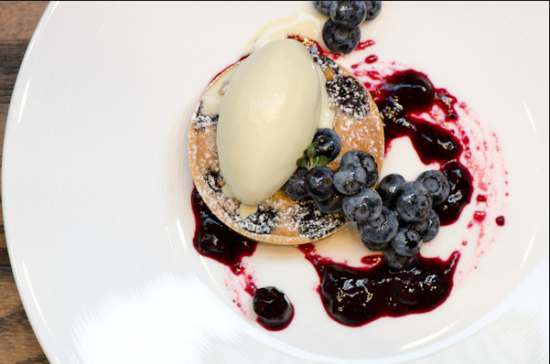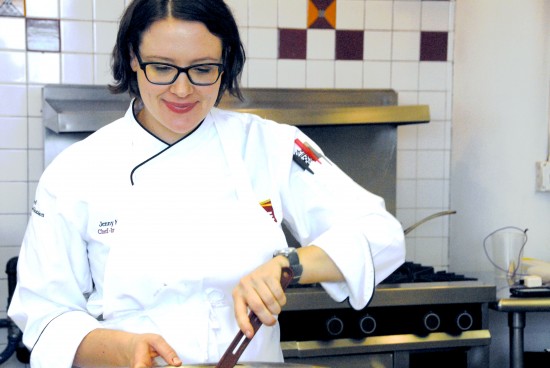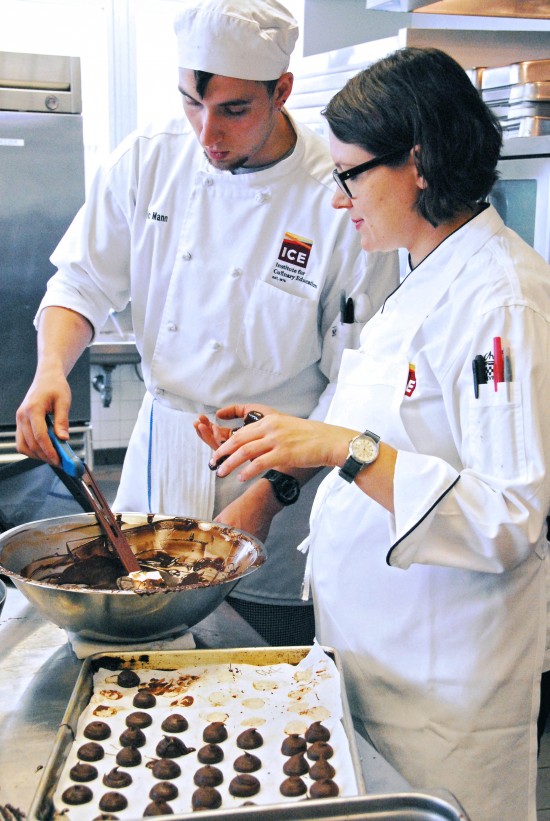As a restaurant pastry chef, I used to be responsible for the day-to-day operations of my pastry departments. My exclusive focus was on making every facet of my department more efficient, creating a positive environment to work in and on being cost effective - all in addition to creating amazing desserts.
 There were the fun parts of the job, like developing new menu items and working with my executive chefs to create desserts that paired perfectly with the rest of the menu. And of course, there were the tasks that I absolutely dreaded: writing schedules, taking inventory and calculating the food cost of my menu items.
There were the fun parts of the job, like developing new menu items and working with my executive chefs to create desserts that paired perfectly with the rest of the menu. And of course, there were the tasks that I absolutely dreaded: writing schedules, taking inventory and calculating the food cost of my menu items.
In the beginning of my career, I started in small departments with one or two pastry cooks who reported to me. But as I gained more experience, my departments became larger and I found myself managing up to a dozen cooks at a time. Eventually, I began directing pastry departments in multiple restaurant locations, which continued to increase the number of pastry cooks I trained.
The further I rose up the ladder professionally, the less and less I found myself making the actual desserts on my menu. I always found it amusing when dinner guests would compliment my desserts as I greeted tables on a Saturday night. Sure, I was the chef who “created” their dessert, but did I really make it? No.
My pastry cooks made everything on the menu. I created the concepts, refined the recipes, and then I passed the recipes along to my staff to execute on a daily basis. I showed up to work every day to make sure the products of their efforts were perfect, but I began to find it strange to be a pastry chef who barely baked a thing—even though I was in the kitchen for 60 or more hours a week. It was exhilarating work, but it just wasn’t the work I thought it would be.

About four years ago, after a very busy holiday season, I had my “ah-ha” moment. I was standing in the kitchen at A Voce in New York City, explaining the details of a new recipe to my sous chef, when I realized: I was no longer a pastry chef. My job was more that of a pastry instructor. This momentary thought didn’t just flit away; instead, it planted a little seed that continued to grow.
There comes a time in everyone’s career when one needs a change. While I felt very satisfied in my work, I began to daydream about ways I could accomplish more—simply adding more desserts to my menu was not going to cut it. I wanted an opportunity to make a larger impact. Working with my team made every day a challenge, but for me that wasn’t enough. They weren’t enough. I wanted to reach an even greater number of aspiring pastry chefs.
And in order to do so (without opening a national chain of restaurants), teaching seemed like the perfect outlet. It was what I was spending all of my time doing anyway, right?Of course, I had to get over my huge fear of leaving the restaurant industry (what would I be if I wasn’t the pastry chef for Tom Colicchio?), so I started teaching recreational baking classes at ICE. By the Spring of 2013, I finally decided to make the transition to becoming a Chef-Instructor in ICE's professional Pastry and Baking Arts Program.

Did you know that, as a newly-hired instructor, I had to audit all of the pastry classes in the program? Yes, that is correct; in order to lead my own classes, I had to return to culinary school. For many, especially those like me who graduated from culinary school over ten years ago and had subsequently worked in the field, the idea of returning to the classroom may have seemed silly. Quite the contrary: I can’t remember the last time I had so much fun.
Before I could become an instructor, I needed to be instructed on how to properly teach. Showing a student how to make a perfect pie dough was not going to be enough; I needed to learn how to demonstrate the hands-on steps involved in making the dough while simultaneously explaining the science behind the process – in this instance, the correct ratio of ingredients, the role each ingredient plays, and proper gluten formation. Heck, I even had to define what gluten was (a protein found in flour that is made up of glutenin and gliadin, in case you were wondering). And just like when I entered a restaurant kitchen for the very first time—back when I had no experience whatsoever—my chef-instructor at ICE had to teach me what to do.

In a couple of months, I will celebrate my first year anniversary as a chef-instructor. It has been a great year, filled with far more challenges than I ever could have imagined. My friends in the industry sometimes tease me about “going into retirement.” But if this is what retirement is like, I don’t know why anyone refers to it as an "eternal vacation". Each day that I enter the classroom, I have 16 sets of eyes on me, each of which have different strengths and weaknesses, and different styles of learning the lesson at hand. Talk about pressure!
It is no small task to teach 16 students how to make pie dough, but I get to watch those 16 seeds grow into professional chefs, where they will evolve, change and grow in turn.My chef friends ask me all the time: “Do you miss being in restaurants?” While my time in restaurants was a challenging and meaningful part of my career, my answer is always: “Never.” Not just because my daily course load as a chef-instructor runs from four to eight hours of teaching (a far cry from my usual 12 hours a day), but because I am finally making an impact that satisfies my desire to do more.
While I may never head the next great cultural revolution—where I convert everyone into a pastry chef—I'm grateful for the opportunity to share my hard-won years of experience with the next generation of great chefs. Finally, it feels like enough.




